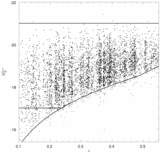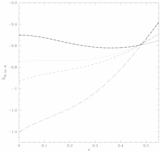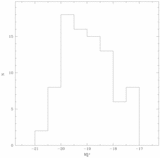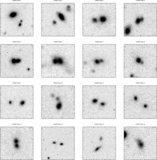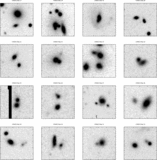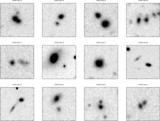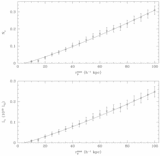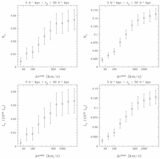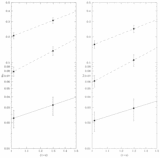Image Details
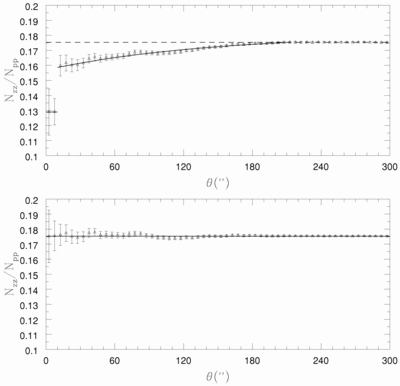
Caption: Fig. 3.
Spectroscopic completeness is computed for a range of angular pair separations. In the upper panel we compute the ratio of spectroscopic pairs (Nzz) to photometric pairs (Npp), as a function of angular separation θ. Error bars are computed using the Jackknife technique. With fair selection, ﹩N_{zz}/ N_{pp}=f^{2}_{s}\approx 0.1753﹩ (dashed line), as this gives an excellent fit to the completeness on large scales (﹩\theta > 3\farcm 5﹩). The incompleteness is modeled with a power law at ﹩10^{\prime \prime }< \theta < 210^{\prime \prime }﹩. This power law clearly does not provide an acceptable fit on smaller scales; hence, we take ﹩N_{zz}/ N_{pp}=0.129﹩ for ﹩\theta \leq 10^{\prime \prime }﹩. The combined fit is marked with a solid line. The observed spectroscopic completeness is corrected using weights from the modeled fit and is plotted in the lower panel. The horizontal solid line gives ﹩f^{2}_{s}=0.1753﹩. The corrected data points are consistent with this value at all separations.
Copyright and Terms & Conditions
© 2002. The American Astronomical Society. All rights reserved. Printed in U.S.A.


